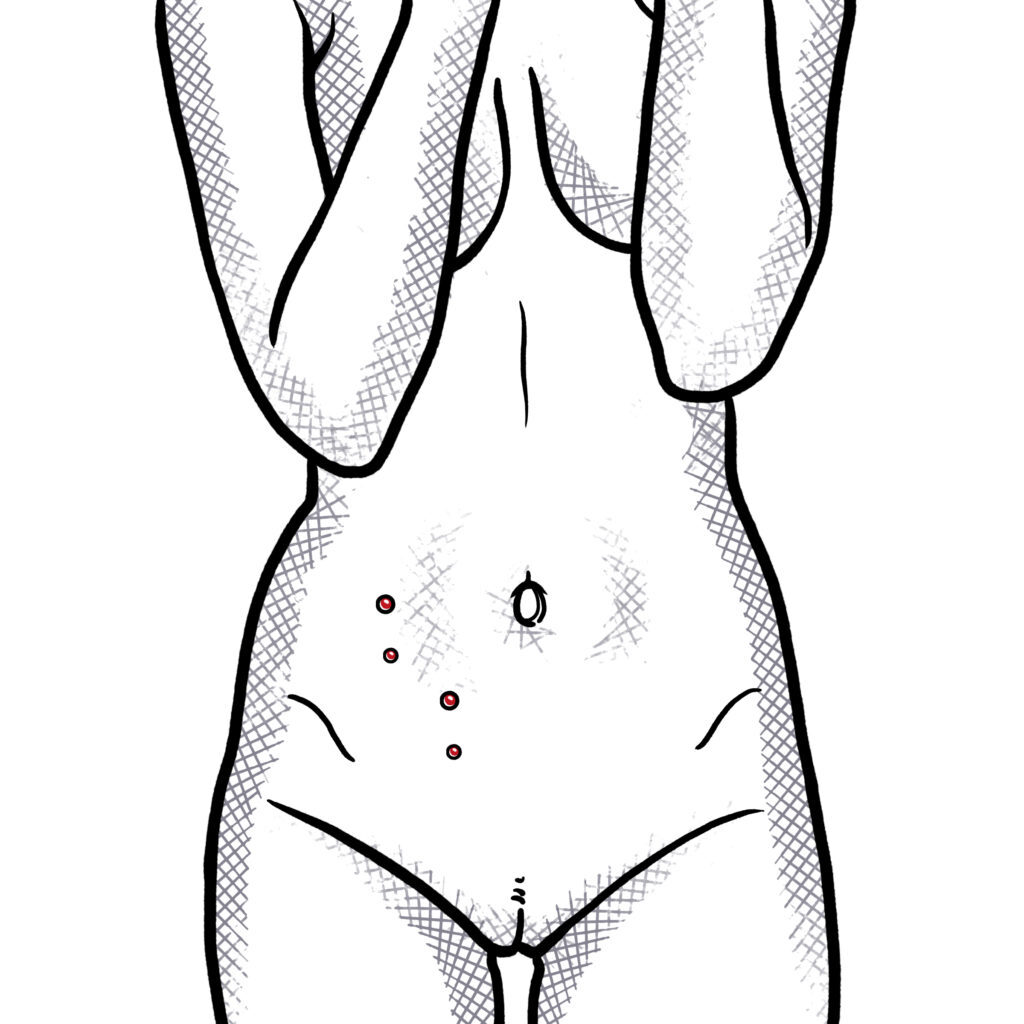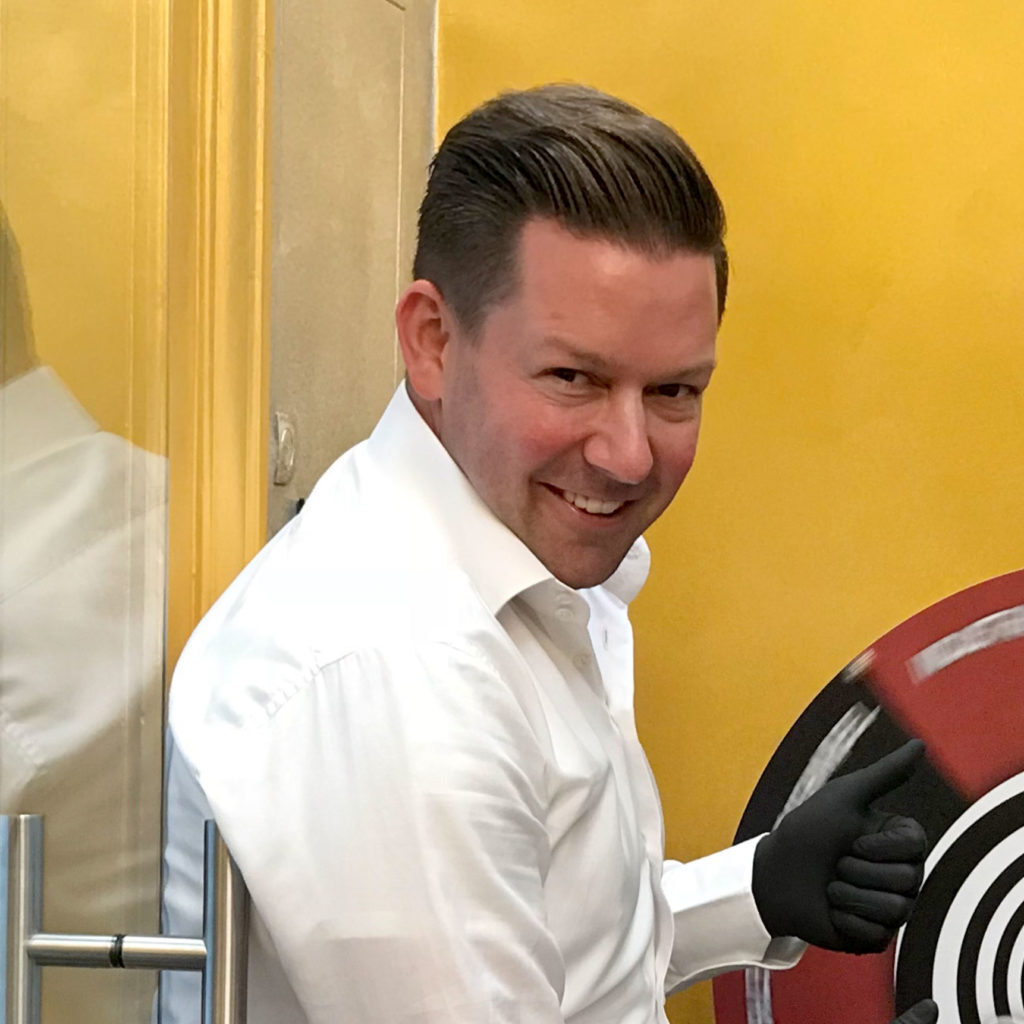Hip piercing

Hip piercing is a form of surface piercing, and is executed in the same way.
Hip piercings are popular among both women and men. They look great and are often done in pairs, or on either side of the hip.
Alternatively, we also place dermal anchors in the hip, in order to combine different forms and configurations.
 Hip piercing is relatively new and has no historical precedent. It is placed near the hip, at the height of the navel or slightly below or above.
Hip piercing is relatively new and has no historical precedent. It is placed near the hip, at the height of the navel or slightly below or above.
Surface piercings allow the use of different lengths, which is always discussed beforehand with the customer. The angle too needs to be precisely calculated, so that the piercing fits perfectly. And the height of the piercing needs to be adjusted so that the individual has no problems wearing pants.
As with all surface piercings, there is a risk of it growing out.
General:
A surface piercing is any body piercing which is performed on a surface of the body/skin which is neither convex nor concave (i.e. flat skin surfaces which neither protrude nor are indented). This means that the entry and exit points are on the same plane.
However, given that surface piercings are subjected to tension, they will also tend to eventually be rejected and grow out.
The healing process is considerably longer, but risks can be minimized by using the appropriate form of jewelry and the correct placement.
We use 90° titanium surface bars for this purpose.
Jewelry:
The so-called surface bars are specially designed for surface piercings. These are barbells with two 90° bends at the end (going in the same direction) which reduce the pressure exerted on the area.
Flexible PTFE jewelry is also a popular choice. The straight shape of this material does adapt itself to the curvature of the piercing canal, but due to its tendency to reassume its original line, it ends up exerting constant pressure on the canal.
The piercing canal must have the right depth when performing a surface piercing. If the surface bar is too shallow, the jewelry will be loose. The ends will protrude too far from the piercing canal, and risk leaning to one side and tearing the surrounding tissue. On the other hand, if it is too deep, the balls at either end will put too much pressure on the skin and lead to rashes and inflammations.
Healing and care:
This form of surface piercing can take between 2 and 4 months to heal completely, rarely longer. The healing process for a surface piercing is a little longer than other piercings, due to the skin being under tension. Like other external piercings, in the first three weeks it should be cleaned with ProntoLind spray twice a day, and then coated with ProntoLind gel. It is important to wash your hands before touching the pierced area and the jewelry itself. By caring for the piercing in the correct manner and with the proper materials, you will rarely have to deal with cases of proud flesh.
Disinfectant solutions containing alcohol or chlorine should be avoided.
Marc
and Piercer
Online reservation for the piercing of your choice
More than 40.000 hiqh-quality piercings and tools.



